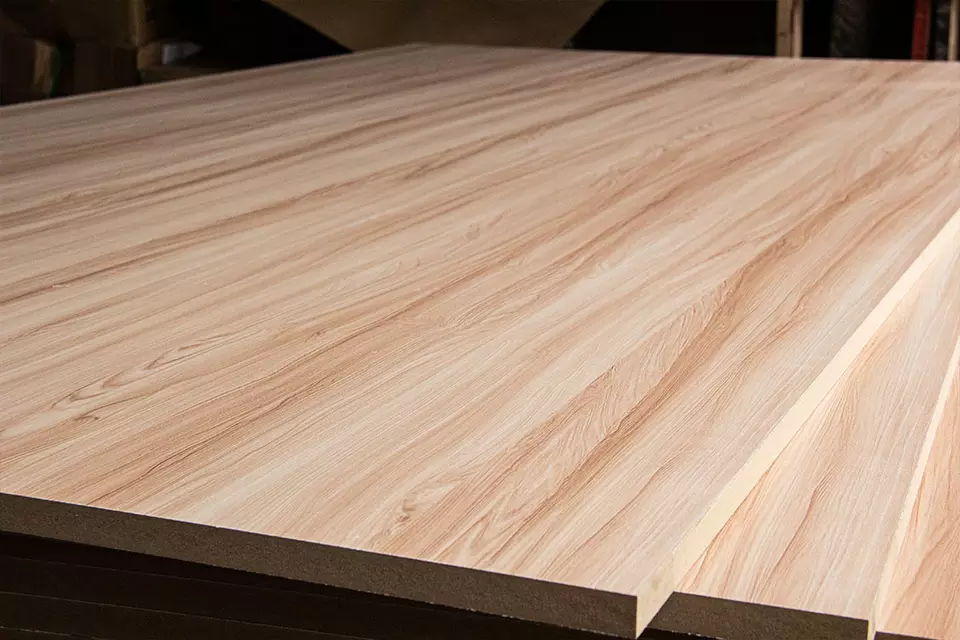Plywood, also known as plywood, is a building material made of multiple layers of wood bonded by glue. As one of the indispensable materials in modern construction and furniture manufacturing, plywood has experienced a long and colorful development process. Let us take a look at the development process of plywood together.

The origin of plywood can be traced back to ancient times. As early as the 3rd century BC, the ancient Egyptians began to use planks made of thin wood sheets glued together. However, until the early 20th century, the manufacture and use of plywood was relatively limited.
At the beginning of the 20th century, with the advancement of science and technology and the demand for new materials, the production of plywood was gradually improved and promoted. The original plywood was made by stacking wood sheets of a single thickness and then gluing them together using a heat-pressing technique. However, this method has some technical difficulties in the production process, such as weak gluing and instability of the board.

By the 1940s, new gluing techniques were invented, such as impression gluing and indirect gluing, which made the production of plywood more efficient and stable. At the same time, the development of industrialization also provides conditions for the large-scale production of plywood.
In the 1960s, with the advancement of glue technology and the demand for higher quality plywood, melamine glue appeared and was widely used in the production of plywood. Melamine glue has excellent heat resistance, moisture resistance and chemical corrosion resistance, which further expands the application of plywood in various fields.

Today plywood is one of the most important materials in construction and furniture manufacturing. Through different manufacturing processes and formulations, plywood can be manufactured into products of various specifications and properties, such as fireproof plywood, moisture-resistant plywood and decorative plywood. The advantages of plywood include firstly, plywood can be made into products of various specifications and properties through different manufacturing processes and formulations to meet the needs of different fields. For example, flame retardants are added to fireproof plywood, which improves the fireproof performance of the material, making it widely used in the construction field. The moisture-resistant plywood adopts a special treatment process to improve the moisture resistance of the material and is suitable for environments with high humidity. Decorative plywood increases the decorativeness and aesthetics of the material through surface coating or lamination.
Secondly, plywood has many advantages. First of all, the strength of plywood is high. Compared with solid wood, its strength is more uniform and stable, and it is not easy to crack and deform. Secondly, plywood is made of multi-layer wood chips, which can effectively reduce the cracking and deformation of wood and improve the stability of the material. In addition, plywood is easy to process, and can be conveniently cut, drilled and trimmed to suit different design requirements. In addition, plywood is characterized by the rational use of forest resources and waste materials in woodworking activities, and is favored by more and more people because it is conducive to environmental protection and sustainable development.
Therefore, plywood is commonly used in the fields of floors, wall panels, roofs and partition walls in building structures, and in furniture manufacturing for frames, surface finishes and internal supports of furniture. In addition, plywood is also widely used in packaging materials, shipbuilding, interior decoration of vehicles such as automobiles and train carriages. This makes it widely used in fields such as building structures, furniture manufacturing, packaging materials and vehicles.

In the future, with the continuous advancement of science and technology, the manufacturing process and material properties of plywood will also be continuously innovated and improved. For example, the introduction of new bio-based adhesives to reduce environmental impact, the development of higher performance plywood products to meet specific needs, etc. As a versatile, efficient and sustainable building material, plywood will continue to play an important role in people’s lives.

